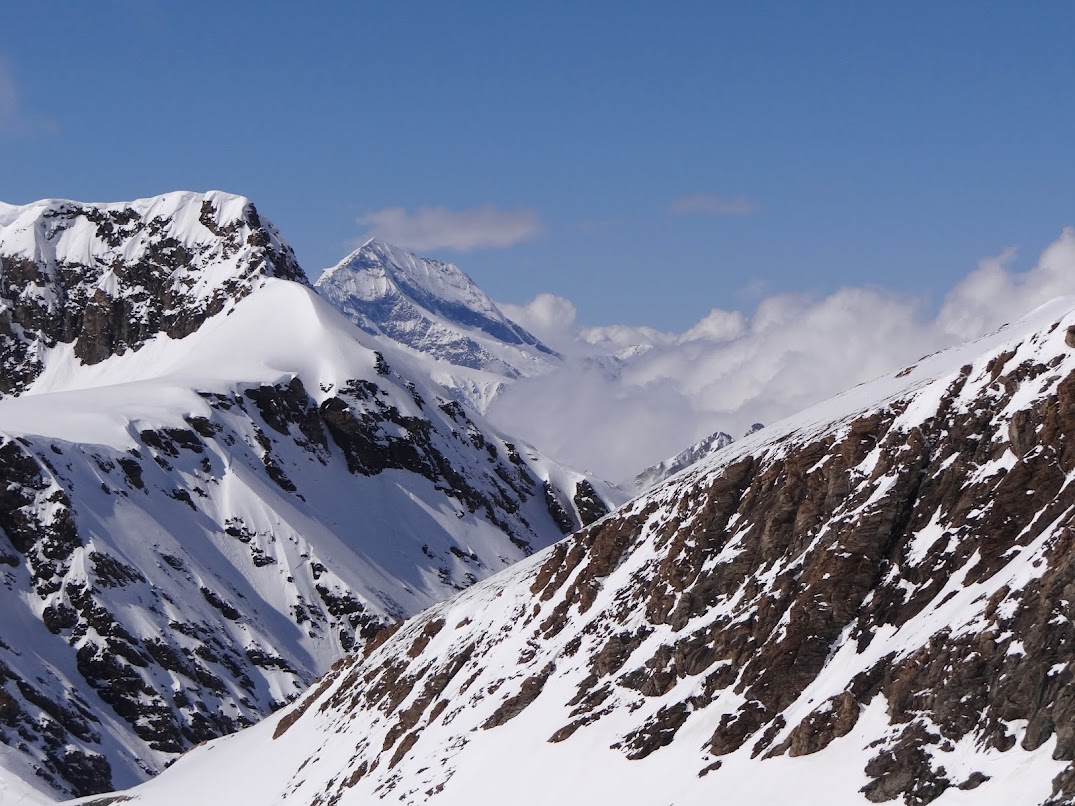Leonie was unable to confidently use the full strength of her right leg so this morning would be a technical session on-piste. We were up high nice and early and with the good snow on the pistes at altitude I decided to start some work on carving – with a view exploiting it to further improve posture and angulation.
Carving
The first exercise was just traversing across the hill, with the feet rolled uphill and “railing” along both edges. I explained that when stationary the weight might go onto the uphill ski but when moving the carved turning would force the pressure onto the lower ski. After a few attempts I demonstrated statically how to change edges – using the ski poles for support when moving over onto the downhill edges. We then tried this on a gentle gradient with shallow linked turns. It’s a hard skill to learn at first – especially if your are used to either skidding or pivoting all the time. Most people let the skis wash out at first as soon as there is any speed. We continued straight over to the Glacier to get well above the clouds and onto the wide open pistes.
When carving the turn is generally sustained for a long time so that provides a solid platform for working on aspects like posture and stance. Luke’s stance has always been somewhat confused so this was a good opportunity to begin to straighten it out. I explained that angulation isn’t a sideways displacement of the hips – it is constructed in a very specific way – by tilting the upper body forwards from the hips an then rotating the whole upper body around the head of the femur of the outside leg. The entire body then inclines into the turn. Angulation is an alteration to the shape of the body within “inclination”. During this process good lower back posture must be maintained for safety reasons – by tilting the pelvis upwards at the front then relaxing the hip joints and maintaining the tension in the lower abdomen. Ella needs to work at this to prevent her from sticking her bottom out with a hollow lumbar region and twisting her spine inappropriately in the process. Luke found it very strange and new to counter the upper body to the direction of the turn – which is a clear indication of how much he has been actively rotating into the turns instead. That makes this a very useful exercise for him. Leonie initially rotated upper body into the turns by mistake- also indicative of how strange and counterintuitive this move was to her. Florence did a good job from the start and Ella initially found it hard. Florence has a lot of natural movement when on piste.
Skating Reintroduced
Once the countered stance had been explored for a while I modified it to link it to skating. When we skate the leg extends out to the side and the upper body tilts forwards – all generating the same sort of angles as we were trying to produce. If the skier visualises skating straight downhill then the ski sent out to the right will slide out to the right above and behind the skier (facing downhill) and then turn rapidly downhill out to the side as the body sinks down into the turn then will swing back downhill of the body sending the skier across the hill even though the upper-body still faces downhill and prepares to come up and then skate out the left leg to the left. This is how the skier really generates angulation - not through just standing there in a countered stance through the turn as in the previous exercise. The skier is actually trying to skate downhill. This returns to the same exercise that we used to develop skating “timing” for down/up motion – though with a different understanding and emphasis. Luke really enjoyed carving down the wide glacier pistes using skating. I explained that when you push the skis forward across the slope and send your body downhill there is a “separation of trajectories” of your body mass and the skis – which is effectively an improved and more advanced way of increasing dynamics.
Off Piste
We didn’t really work on much technique off-piste. The snow was tricky and Ella fell a few times but did well later on the steep bumps. I suggested keeping the feet together in the deeper snow and trying to bounce – pivoting the skis inwards when rising out of the snow and combining this with dynamics. For skis to pivot well we need a reduction in pressure so active rebounding or bouncing needs to be developed. This can also be done with a jump and slight retraction of the legs if the snow is really bad or it is too steep. Bumps can be used to help this “unweighting” process by lifting you up and checking your speed at the same time. There are many ways to achieve this effect. When the skis are not being pivoted then the opposite is required – pressure must be increased at the start of the turn to get the ski to work early in the turn on its inside edge. We lose pressure at the start of falling into a turn and so need to generate an impulse (into the turn and downwards) and acceleration from the legs to overcome the loss in pressure under the feet that comes from falling. (This must strictly avoid the centre of mass going upwards through the start of the turn – it always has to drop down into the turn). Both Luke and Ella were looking better at the hips and with posture when skiing off-piste.





No comments:
Post a Comment